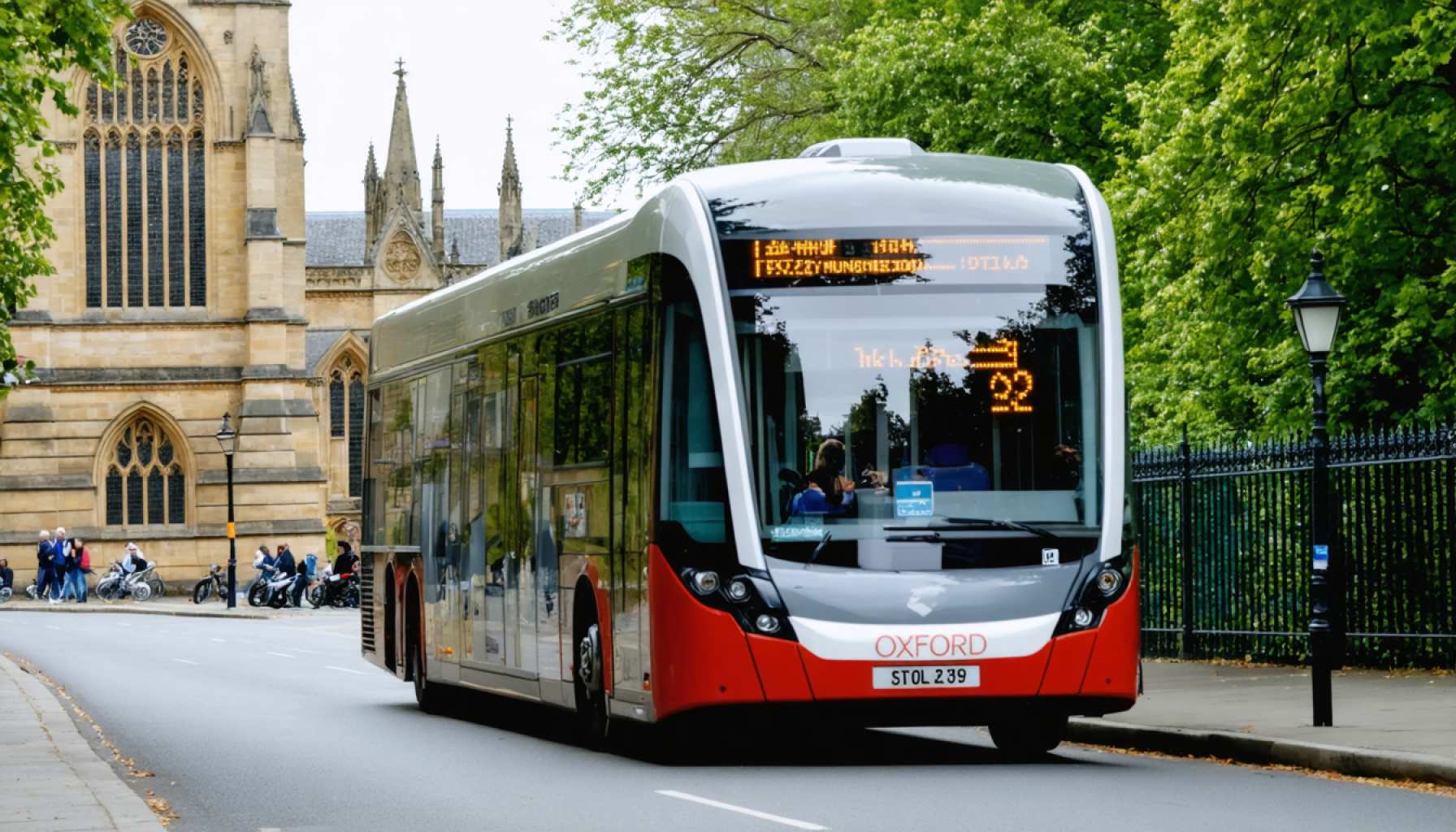- Service 600, a fully electric bus, launches on February 23, revolutionizing Oxford’s transport network.
- The route connects key destinations, including Oxford Science Park, Oxford Brookes University, and major hospitals, enhancing access for residents and commuters.
- Stagecoach West plans further network expansion with a longer S7 route, enhanced S2 service, and the transfer of the H2 route to Pulhams Coaches.
- The zero-emission buses operate every 30 minutes, promoting green and efficient urban transit.
- Transport leaders see Service 600 as a forward-thinking initiative, offering affordable, stress-free commutes.
- The new service aims to transform Oxford’s urban experience, fostering a more sustainable and connected city life.
Oxford stands on the brink of a transportation revolution as Service 600, a brand-new, fully electric bus route, gears up to hit the roads. Slated for launch on February 23, this sleek addition promises to reshape how residents and commuters navigate the city.
Connecting the Dots: The route weaves through a tapestry of key destinations. From the strategic hubs of Redbridge and Thornhill Park & Rides, it threads through Oxford Science Park, Greater Leys, Cowley Centre, and the prestigious bastions of learning at Oxford Brookes University. Major healthcare giants like Churchill and John Radcliffe Hospitals also lie on its path, promising seamless journeys for workers and students alike.
A Burgeoning Network: Beyond Service 600, Stagecoach West has revealed an expansion blueprint. Brace for an extended S7 route to Corn Street and enhanced S2 service offering early morning and late evening outings between Witney and Oxford. However, the H2 route will see a new operator, Pulhams Coaches, ushering in another chapter of change.
Zero Emissions, Infinite Possibilities: These buses glide silently across Oxford, embodying the city’s commitment to green, efficient transport. Every 30 minutes, they promise to orchestrate a dance of productivity and leisure, cutting through the monotony of traffic congestions.
The fanfare surrounding this venture is contagious. Oxfordshire’s transport leaders hail the service as a beacon of the future, comprehensive and inclusive. With tickets priced to entice and guarantee of stress-free commutes, Service 600 does more than offer rides; it extends an invitation to a smarter, greener city experience.
As the electric buses take their inaugural rides, Oxford eagerly watches, excited for what this new service brings—revolutionizing not just transport, but the rhythm of city life itself.
Revolutionize Your Commute: How Oxford’s Electric Bus Route Will Transform City Travel
How-To Steps & Life Hacks: Making the Most of Oxford’s Service 600
1. Plan Ahead with Technology: Use apps like Google Maps or Citymapper to track real-time bus movements and avoid unnecessary waiting times at bus stops.
2. Take Advantage of Park & Rides: If commuting from outside the city, utilize the Redbridge and Thornhill Park & Ride services. Park your car securely and board the electric bus for a stress-free entry into Oxford.
3. Mix Leisure with Productivity: The buses run every 30 minutes, providing ample opportunity to finish tasks or enjoy leisure activities while commuting effortlessly across the city.
4. Benefit from Seamless Connections: The route’s strategic placement near Oxford Brookes University and hospitals make it ideal for students and healthcare professionals.
Real-World Use Cases: Service 600 in Action
– Daily Commuters: Perfect for workers commuting to the John Radcliffe Hospital or the Oxford Science Park who aim to avoid city congestion.
– Tourists & Visitors: Enjoy convenient travel through major commercial and cultural hubs without the fuss of city navigation.
– University Students: A cost-effective and green option for students at Oxford Brookes University, ensuring timely arrival for lectures.
Market Forecasts & Industry Trends
The global electric bus market is expected to grow substantially, driven by government initiatives for green infrastructure and increased environmental consciousness. According to Allied Market Research, the global electric bus market size was valued at $17.95 billion in 2020 and is projected to reach $49 billion by 2028.
Reviews & Comparisons
– Service Efficiency: Electric buses are lauded for their quiet operation and smooth rides compared to traditional diesel buses.
– Cost Competitiveness: Initially, electric buses may have a higher upfront cost but lower operational costs, making them increasingly appealing to urban planners and consumers.
Controversies & Limitations
– Charging Infrastructure: A key limitation is the dependency on robust charging stations infrastructure, which is still developing in many areas.
– Range Anxiety: While the range of modern electric buses has improved, limited range remains a concern for longer routes.
Features, Specs & Pricing
– Environmentally Friendly: These zero-emission vehicles align with global commitments to reduce carbon footprints.
– Affordable Commuting: Competitive ticket pricing aims to make Service 600 an attractive option for all city dwellers.
Security & Sustainability
– Reduced Emissions: Supports Oxford’s sustainability goals by significantly lowering transport emissions.
– Future-Proofing: The initiative prepares the city for future transport solutions centered on sustainability and innovation.
Insights & Predictions
With the successful integration of electric buses in Oxford, other cities may replicate similar models, fostering a broader acceptance and infrastructure development for electric public transport.
Pros & Cons Overview
– Pros: Lower emissions, quieter operations, potential cost savings, strategic connectivity.
– Cons: Dependency on charging infrastructure, initial higher costs, potential range limitations.
Actionable Recommendations
– Stay Informed: Keep abreast of service changes and expansions through official transport websites and updates.
– Embrace Change: Transitioning to electric buses is a step towards a greener future; proactive participation can amplify community benefits.
– Engage Local Dialogues: Advocate for more sustainable transport solutions in your community by engaging in local forums and discussions.
Readers interested in learning more about how Oxford is pioneering green transportation can visit Stagecoach for further updates and advancements in electric public transport services.
